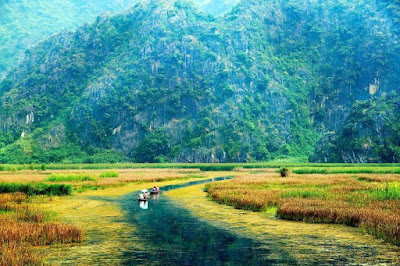Secretary general of the Asean-Korea Centre Lee Hyuk announced today that the Vietnam leg of the Asean Community-based Tourism Programme 2019 is now taking place in Mai Chau Valley.
.
Community-based tourism (CBT), an emerging form of sustainable tourism, empowers local residents by allowing their participation in developing tourism products and returns the profits to the community.
.
Community-based tourism (CBT), an emerging form of sustainable tourism, empowers local residents by allowing their participation in developing tourism products and returns the profits to the community.
.
The Asean Tourism Strategic Plan (ATSP) 2016-2025 suggests invigorating community participation as a way to encourage sustainable and inclusive tourism among member states. In continued efforts to promote community-based tourism, Asean has set up the Asean CBT Standard and grants Asean CBT awards to local communities that achieves the high standards of excellence.
.
.
To support this effort, the Asean-Korea Centre (AKC) has organised the “Community-based Tourism Programme: 2019 in Vietnam, following the success of previous programs in Malaysia (2015), Brunei (2016), Thailand (2017), and Indonesia (2018).
.
.
The programme aims to promote Vietnam’s CBT and introduce its hidden tourist attraction to the South Korean public and international tourists.The trip, in which journalists, youtubers, travel essayists and other content creators are participating kicked off yesterday and runs through Friday.
.
.
The visitors will get to experience Vietnamese traditional culture, including the daily lives of the different ethnic minorities.
.
At the end of the programne, their first-hand experience of traditional housing, batik and paper making of the H’mong ethnic group, traditional cuisine, and outdoor activities such as hiking in Pu Luong nature reserve and kayaking on the Da Reservoir will be introduced to the Korean public in feature articles and videos.
.
At the end of the programne, their first-hand experience of traditional housing, batik and paper making of the H’mong ethnic group, traditional cuisine, and outdoor activities such as hiking in Pu Luong nature reserve and kayaking on the Da Reservoir will be introduced to the Korean public in feature articles and videos.
.
“Mai Chau Village, situated about 75 km from Hanoi in Hoa Binh Province, received the Asean Community-based Tourism Award in 2017, in recognition of the community’s efforts to protect the natural environment and develop sustainable tourism in the region. I hope this programme enhance understanding of CBT and thus advocate for sustainable development in Asean.”
Source - TheNation
Source - TheNation








